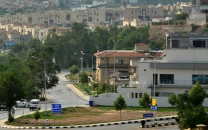Upgrading the rail sector
It is urgent for Pakistan to upgrade its existing railway system to improve the quality and quantity of transportation

The writer is a banker based in Karachi. He follows the Pakistan cricket team and the Arsenal Football Club as atonement for his sins
China first began building its railway as far back as 1876. Since then, the length of railway tracks in operation in China has reached 124,000 kilometres, including 22,000 kilometres of a high-speed rail. Between 1997 and 2007, China upgraded its rail lines a total of six times. In doing so, it entered a new era of “high speed and heavy load railway system”, which is comparable with the best in the world.
The sixth upgrade succeeded in transforming and benefiting every aspect of Chinese society. It has also vastly improved the overall efficiency and capability of logistics. For passenger transportation on the main line, people can travel back and forth in one day within the distance of 500km; within the distance of 1,200km to 1,500km, passengers can start their trip at dawn and arrive at their destination at dusk. Within the distance of 2,000km to 2,500km, passengers can make the trip within 24 hours. The speed of a passenger train has shot up from 90km/h to 120km/h, and from 160km/h to 200km/h successively. The speed of a freight train has gone up to 80km/h and 120km/h, and the load of single freight train has reached 5,000 tons while a double line load has reached 100 million tons.
The Pakistan Railways originated in the year 1861. After more than one century’s service, railway equipment is worn-out and lines are in deplorable condition with assorted sleepers, damaged sub-grade and ballast bed, dilapidated bridges, aged steel girders and unsafe level crossings.
Rail freight transportation makes up just five per cent of the total cargo volume in Pakistan. Therefore, it is urgent for Pakistan to upgrade its existing railway system to improve the quality and quantity of transportation, so that the railways can play its necessary role in the development of the national economy.
It is a complicated task to upgrade the railway line, tracks, bridges and culverts, tunnels, stations, communication, signalling and locomotives, because it involves integration of the whole system matching the operational speed of the trains.
Before 1997 the railway system in China was quite similar to that of the Pakistan Railways. But China leapfrogged ahead after spending 10 years in improving the efficiency and capacity of its railways. Chinese companies now have a wealth of experience in managing and running the upgrade process. Based on the requirement of specific projects, they can work out a package solution for integrating, financing, constructing, managing, procuring and commercially developing the railway. Additionally, Chinese railway construction companies enjoy a high reputation of high price/performance ratio, cheaper operating costs and high adaptability. The cost per kilometre of Chinese railway construction is only two-thirds compared to most developed countries. Compared with 27 cents per kilometre in developed countries, the operating cost of Chinese high-speed railway is 7 cents per kilometre. Through Chinese financing, technology and management, our railway system can be turned around.
Published in The Express Tribune, May 22nd, 2017.
Like Opinion & Editorial on Facebook, follow @ETOpEd on Twitter to receive all updates on all our daily pieces.















COMMENTS
Comments are moderated and generally will be posted if they are on-topic and not abusive.
For more information, please see our Comments FAQ